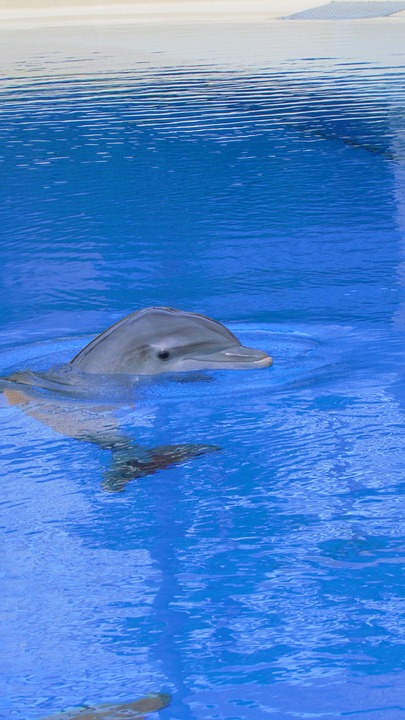Enrichment feeding is a concept that has been gaining popularity among fish keepers in recent years. It involves providing fish tank inhabitants with a variety of foods and feeding techniques to promote natural behavior, mental stimulation, and overall well-being. While maintaining a suitable habitat and water quality are essential, enrichment feeding can take fish care to the next level.
So, what exactly is enrichment feeding? Enrichment feeding refers to the practice of offering a diverse range of foods and feeding techniques to fish tank fish. It goes beyond simply providing a staple diet and aims to mimic the conditions and challenges fish would encounter in their natural habitats. By doing so, enrichment feeding promotes natural behaviors such as hunting, foraging, and exploring.
Enrichment feeding is important for fish tank fish for several reasons. First and foremost, it provides mental stimulation. Fish are intelligent creatures that require mental stimulation to prevent boredom and stress. Enrichment feeding engages their minds and keeps them active, reducing the risk of behavioral problems.
Additionally, enrichment feeding reduces stress and boredom. Fish that are constantly exposed to the same type of food and feeding routine can become stressed and bored. By offering a variety of foods and feeding techniques, enrichment feeding keeps fish engaged and satisfied, reducing stress levels and promoting a more natural and fulfilling environment.
Furthermore, enrichment feeding enhances overall health and well-being. By encouraging fish to exhibit natural behaviors and providing a varied diet, enrichment feeding ensures that they receive the necessary nutrients for optimal health. It can also help prevent obesity and other diet-related health issues.
Enrichment feeding also encourages natural foraging instincts. In the wild, fish spend a significant amount of time searching for food. Enrichment feeding replicates this behavior by making fish work for their food. This can include using feeding puzzles, interactive devices, or hiding food in different locations within the tank. By engaging in these foraging activities, fish are more active and less likely to exhibit destructive behaviors.
Another benefit of enrichment feeding is the improvement of fish tank aesthetics and viewer enjoyment. Watching fish actively search for and consume their food can be highly entertaining and visually appealing. Enrichment feeding adds an extra dimension to the aquarium experience and can be a source of joy for both fish keepers and viewers.
There are various techniques for enrichment feeding that can be implemented. Live or frozen food enrichment involves offering live or frozen prey items, such as brine shrimp or bloodworms, to mimic natural hunting behaviors. Feeding puzzles and interactive devices challenge fish to work for their food, stimulating their minds and bodies. Including vegetation and aquatic plants in the tank provides a more natural environment and encourages grazing behavior. Varying feeding locations and methods, such as using floating or sinking foods, can also add variety to the feeding routine.
To implement enrichment feeding successfully, it is important to research appropriate options for specific fish species. Different fish have different dietary needs and preferences, so it is crucial to provide suitable enrichment options. Monitoring and adjusting feeding routines is also necessary to ensure that fish are not underfed or overfed. Despite enrichment feeding, it is essential to maintain a balanced diet and provide all necessary nutrients. Gradually introducing enrichment techniques can help fish adjust and avoid stress. Seeking professional advice, such as consulting with a veterinarian or experienced fish keeper, can also be beneficial.
Now, let’s address some frequently asked questions about enrichment feeding. Can enrichment feeding be applied to all types of fish? In general, enrichment feeding can be beneficial for most fish species. However, it is important to research and cater to the specific needs and dietary requirements of each species.
How often should enrichment feeding be practiced? The frequency of enrichment feeding depends on the species and their individual needs. It is recommended to provide enrichment feeding at least once or twice a week, but this can vary.
Can enrichment feeding reduce aggressive behavior among fish? Enrichment feeding can help reduce aggression by providing fish with mental stimulation and a more fulfilling environment. However, it is not a guaranteed solution for aggressive behavior, and other factors should also be considered.
Will enrichment feeding affect water quality in the tank? Enrichment feeding should not significantly impact water quality if done correctly. It is important to monitor and remove any uneaten food to prevent water pollution.
Is there a risk of overfeeding when implementing enrichment techniques? There is a risk of overfeeding if not monitored properly. It is important to adjust the amount of food based on the individual needs of the fish and remove any uneaten food to prevent water quality issues.
Are there any alternative options for enrichment feeding? Yes, there are various alternative options for enrichment feeding, such as providing hiding spots, adding tank decorations, or creating currents to simulate natural environments.
Can enrichment feeding benefit fish with specific health conditions? Enrichment feeding can be beneficial for fish with specific health conditions, as it promotes overall well-being and provides mental stimulation. However, it is important to consult with a veterinarian to ensure that the enrichment techniques are appropriate for the specific condition.
In conclusion, enrichment feeding is a valuable practice for fish tank fish that promotes natural behavior, mental stimulation, and overall well-being. By providing a diverse range of foods and feeding techniques, fish can thrive in a more fulfilling environment. It is important to research, monitor, and adapt enrichment techniques to suit the specific needs of each fish species, ensuring a happy and thriving aquarium ecosystem.









